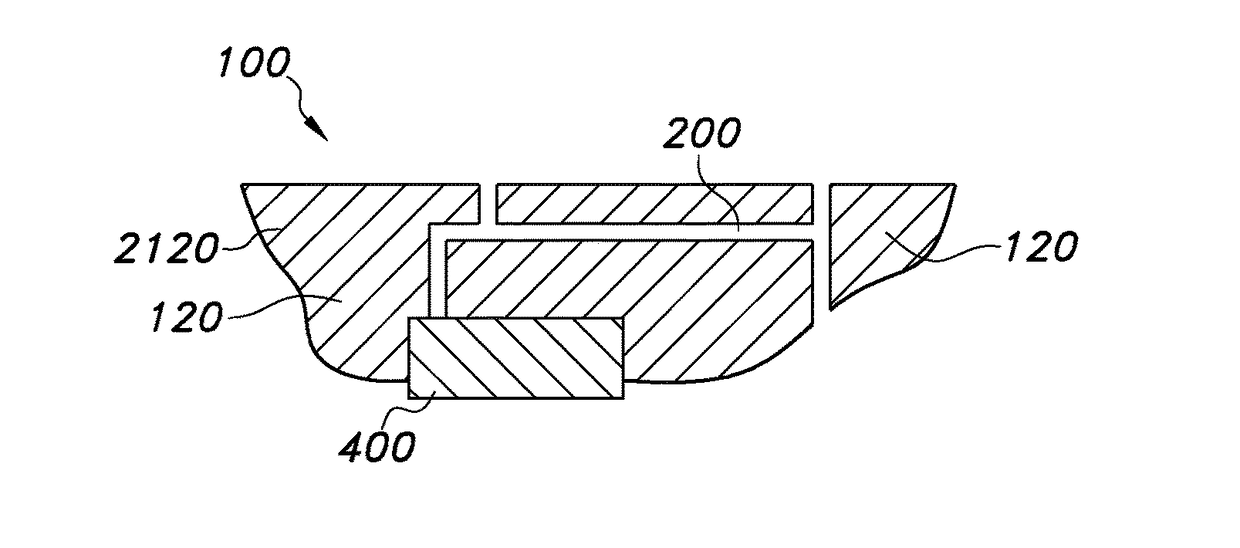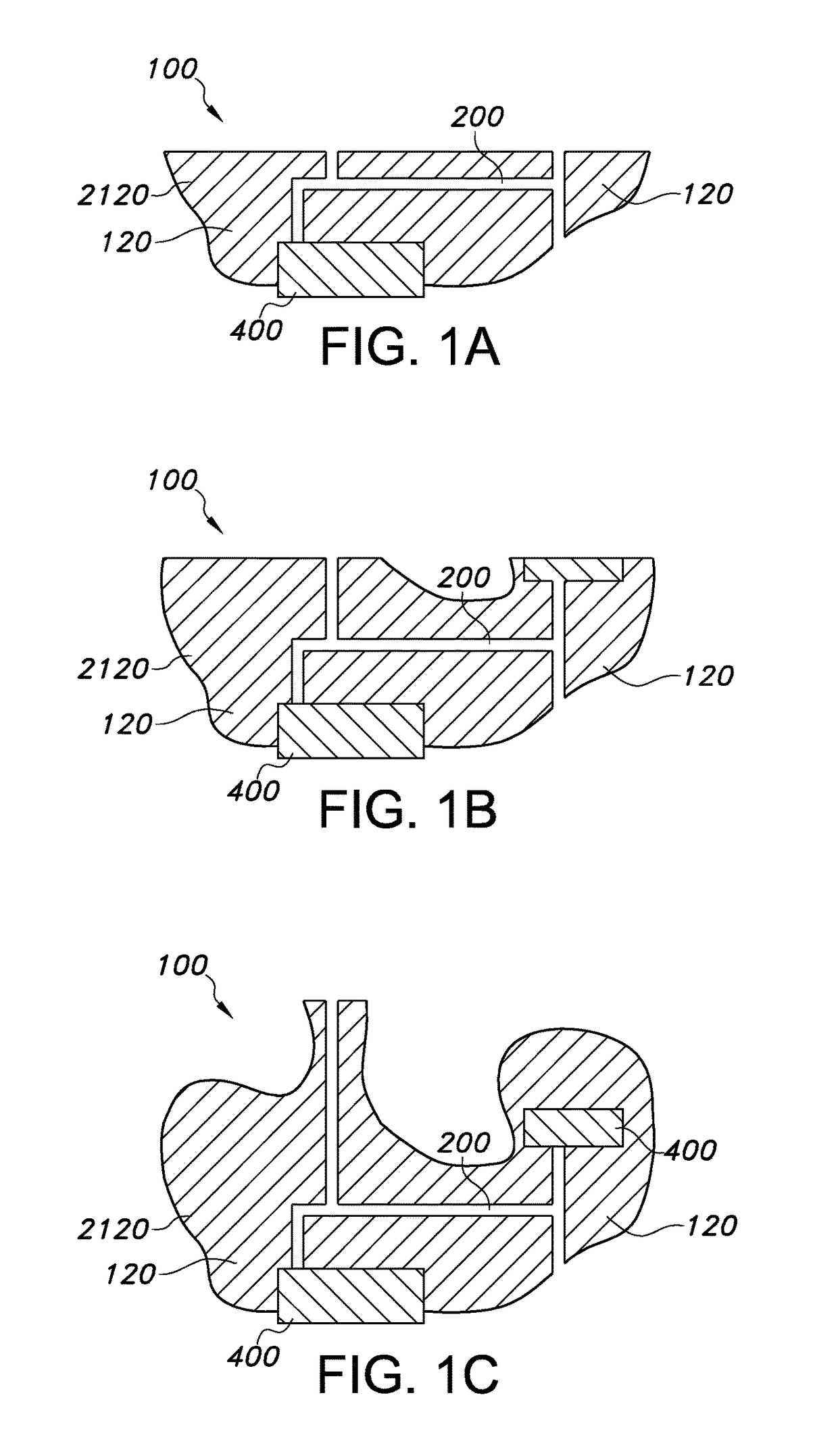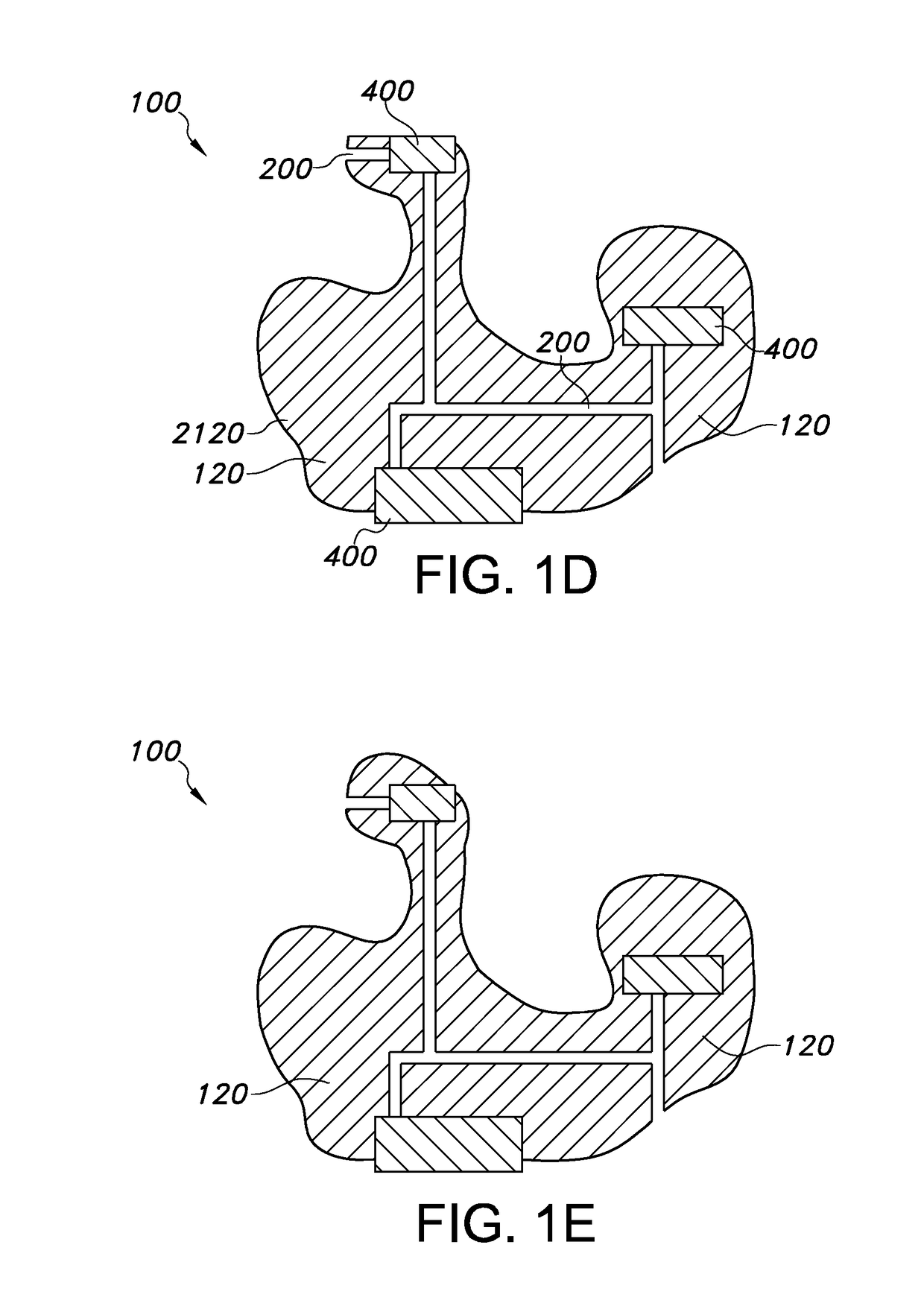Making 3D printed shapes with interconnects and embedded components
a 3d printed, interconnecting technology, applied in the direction of additive manufacturing processes, printed circuit non-printed electric components association, manufacturing tools, etc., can solve the problems of limiting printing freedom, hindering printing process and speed, and limiting the printing freedom, so as to achieve better thermal transfer, increase thermal conductivity of functional materials, and improve thermal conductivity
- Summary
- Abstract
- Description
- Claims
- Application Information
AI Technical Summary
Benefits of technology
Problems solved by technology
Method used
Image
Examples
Embodiment Construction
[0050]In FIGS. 1a-1i an example is schematically shown with functional components at the bottom of the 3D printed part (or 3D printed object 100) as well as embedded inside the 3D printed part. In this example we show a 3DP part with three electrical components. The process is not limited to this example of three electrical components and multiple electrical components could be added in the same way. In FIG. 1a a process step or stage is shown, wherein an electrical component 400 is first placed on the build platform and overprinted with a few layers (indicated with printed material 120). The printing of the part is started, leaving gaps where the tunnels (or channels) will be formed. Reference 2120 indicates printed material being electrically insulating. In a next stage, see FIG. 1b, a second electrical component is added. The second electrical component may be aligned such that the conductive pads are over the desired tunnels running upwards from conductive pads on the first elec...
PUM
| Property | Measurement | Unit |
|---|---|---|
| viscosity | aaaaa | aaaaa |
| temperature | aaaaa | aaaaa |
| size | aaaaa | aaaaa |
Abstract
Description
Claims
Application Information
 Login to View More
Login to View More - R&D
- Intellectual Property
- Life Sciences
- Materials
- Tech Scout
- Unparalleled Data Quality
- Higher Quality Content
- 60% Fewer Hallucinations
Browse by: Latest US Patents, China's latest patents, Technical Efficacy Thesaurus, Application Domain, Technology Topic, Popular Technical Reports.
© 2025 PatSnap. All rights reserved.Legal|Privacy policy|Modern Slavery Act Transparency Statement|Sitemap|About US| Contact US: help@patsnap.com



